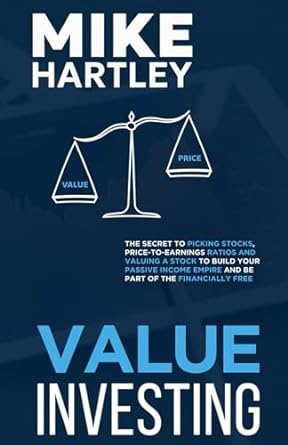Question
Multiple choice 2)Which one of the following conditions determines the investors overall optimal portfolio? a. The marginal ratio of substitution of the investors utility function
Multiple choice
2)Which one of the following conditions determines the investors overall optimal portfolio?
a. The marginal ratio of substitution of the investors utility function must be equal to the Sharpe ratio of the optimal risky portfolio.
b. The standard-deviation of the overall portfolio in minimised.
c. The expected return of the overall portfolio is maximised.
d. The slope of the Sharpe-ratio is equal to zero
3. Select the incorrect statement about the optimal portfolio weights in the SIM from the following:
a. When short sales are not allowed, the investor will hold more assets in her portfolio than when short sales are allowed.
b. When the single index is tradeable, securities with negative ai will be shorted.
c. When the single index is tradeable, securities with higher ai (given everything else constant) are more desirable.
d. The investor's portfolio with no short sales is less desirable than the portfolio with short sales.
4. Markets can never be strong-form efficient because:
a. There are too many traders in them.
b. Investors are rational.
c. Information is costly to acquire.
d. All information is public.
5. Which one of the following is not a property of a pure arbitrage portfolio?
a. Zero investment.
b. Zero systematic risk.
c. Positive net return.
d. All of the above
6. Why do DCMs use dividends and not earnings in their formulas?
a. Because earnings are not equal to economic profit.
b. Because only cash flows matter to the investors.
c. Because dividends include other cash flows that earnings do not.
d. Because earnings artificially inflate the asset's valuation.
7. The Macaulay duration is the:
a. The bond's semi-elasticity of the price with respect to the interest rate.
b. The bond's price elasticity with respect to the interest rate.
c. The bond's change in price with respect to time.
d. The bond's change in price with respect to the interest rate.
8. What is the main difference between the Treynor and the Sharpe measures of performance?
a. They use different definition of excess return.
b. They have opposite signs.
c. They use different definition of risk.
d. One is the inverse of the other.
Step by Step Solution
There are 3 Steps involved in it
Step: 1

Get Instant Access to Expert-Tailored Solutions
See step-by-step solutions with expert insights and AI powered tools for academic success
Step: 2

Step: 3

Ace Your Homework with AI
Get the answers you need in no time with our AI-driven, step-by-step assistance
Get Started


